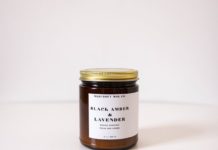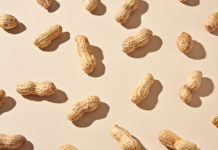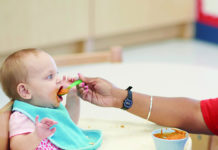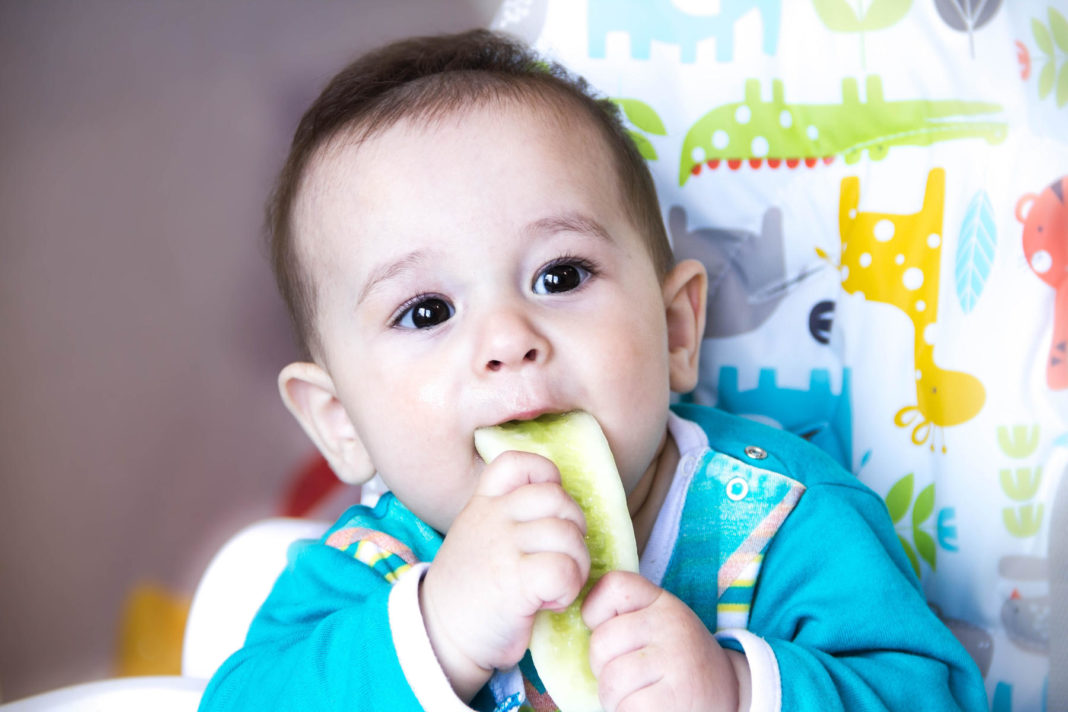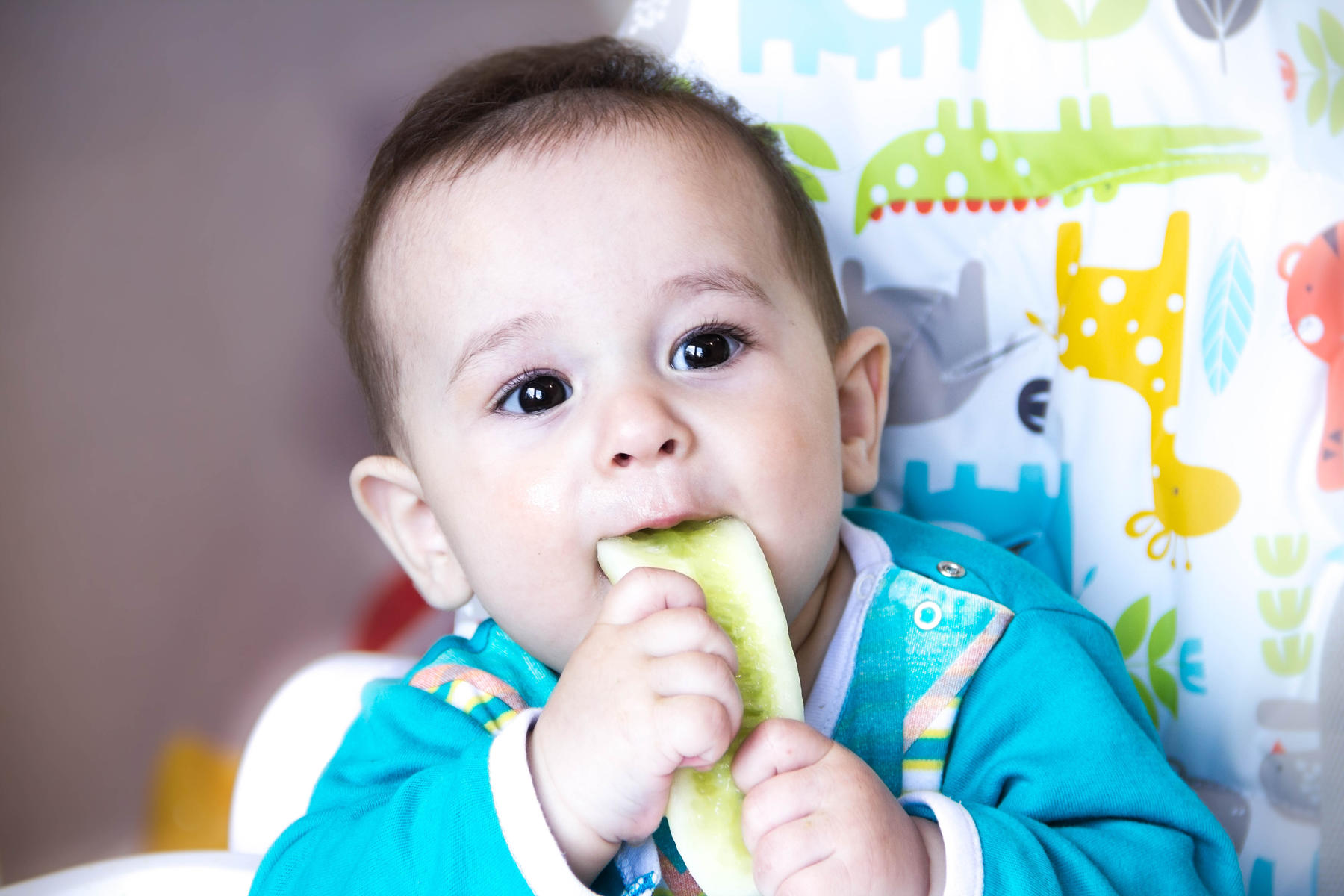
You may have already heard about baby-led weaning, a feeding approach in which babies feed themselves whole pieces of food from the start. Some parents who follow BLW skip purees entirely, while some do a combo, allowing their baby to self-feed pieces of food while also spoon-feeding them blended ones. For others, the idea of giving baby any kind of finger foods as early as six or seven months of age sounds downright crazy and invokes fears of gagging and choking.
But are some parents letting their anxiety get the best of them and delaying finger foods too long? The American Academy of Pediatrics encourages self-feeding when babies can sit up and bring their hands to their mouth. Yet according to Wendy Jo Peterson, RD, co-author of Born to Eat: Whole Healthy Food From Baby's First Bite, sticking with spoon-feeding is a worrisome trend she's observing among parents. "I see parents waiting until a year to regularly offer finger foods and well beyond a year before breaking the habit of spoon-feeding," says Peterson, who cites fear as the most common reason she hears.
It's understandable that parents feel nervous about gagging and choking. But gagging—a safety mechanism that allows babies to push food to the front of the mouth to be fully chewed or mashed—is actually a normal, appropriate reaction. (Choking, which happens when an object becomes stuck in the throat and causes airflow blockage, is unlikely if safe-feeding practices are in place such as having babies sit upright when eating and avoiding common choking hazards like chunks of hot dogs and whole grapes. But parents should always be present during feeding and know CPR no matter what they're feeding.)
What's so important about finger foods? They actually play a vital role in baby's development—they're not simply a fun diversion from purees—and delaying foods beyond purees could lead to sensory issues and delayed acceptance of other foods and textures. "If an infant stays on pureed foods too long without regular introductions of finger foods, they can become overly comfortable with that isolated texture," she says. If your baby is familiar and comfortable with many kinds of textures (and flavors), there's a greater chance she'll be a more successful and adventurous eater. For example, some research shows that babies who were introduced to lumpy solids after 10 months of age had more feeding problems at age 7 compared to those introduced earlier. Babies who are allowed to self-feed from a young age may also become better at self-regulating, eating when hungry and stopping when full.
There's also the fear factor to consider. When babies gag during self-feeding at a young age, they're able to register the texture and move on. But babies begin to acquire fears at the one-year mark, says Peterson. "Babies who have started developing fears or pick up on parental fears may try something, gag, and then fear trying that food or texture again," she says.
If transitioning from spoon-feeding to self-feeding still makes you jittery, Peterson recommends starting with foods that your baby can mash easily with her gums, like pieces of steamed sweet potatoes and very ripe avocado "fingers" (long spears your baby can hold). Then advance to other soft foods like canned green beans and boiled broccoli. Believe it or not, babies can even self-feed foods like steak! Peterson recommends pieces that are long and two-fingers wide that babies can hold, gum, and suck on without the risk of breaking off bits. (See this Born to Eat video for examples of what safe first foods look like.)
Though BLW advocates like Peterson recommend that self-feeding be a part of your baby's meals right from the start, some parents may still choose to wait. If that's you, be sure your child is getting finger foods at each meal by at least 8-9 months. "We have survived for thousands of years without blenders," she says. "While modern tools are helpful, they also take away some of our confidence that our babies can do more. Stay calm and have faith in your child's natural born instincts."
Sally Kuzemchak, MS, RD, is a registered dietitian, educator, and mom of two who blogs at Real Mom Nutrition. She is the author of The Snacktivist's Handbook: How to Change the Junk Food Snack Culture at School, in Sports, and at Camp—and Raise Healthier Snackers at Home. She also collaborated with Cooking Light on Dinnertime Survival Guide, a cookbook for busy families. You can follow her on Facebook, Pinterest, and Instagram. In her spare time, she loads and unloads the dishwasher. Then loads it again.






